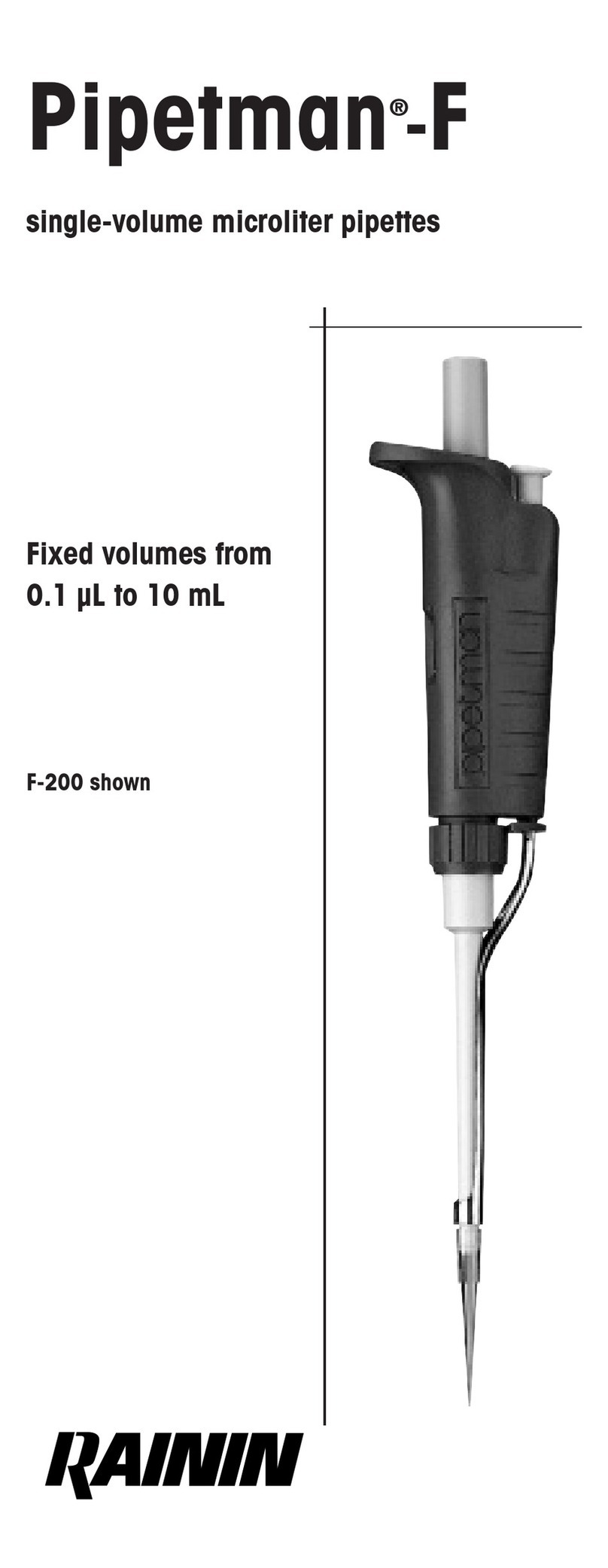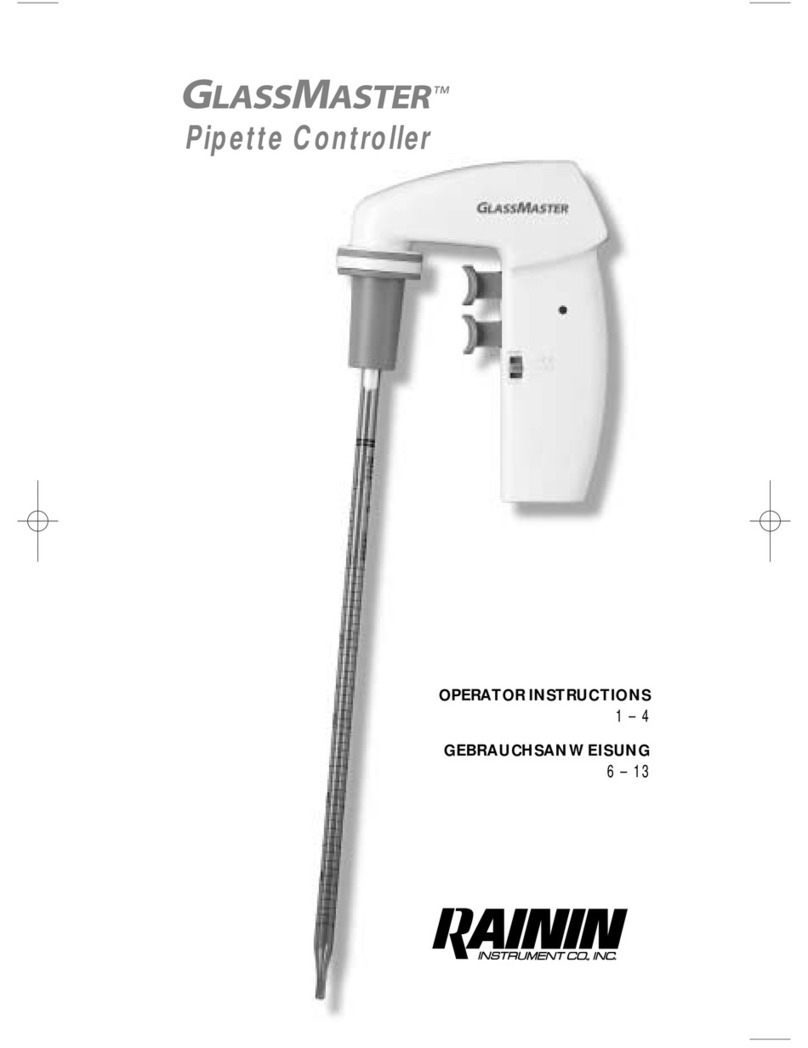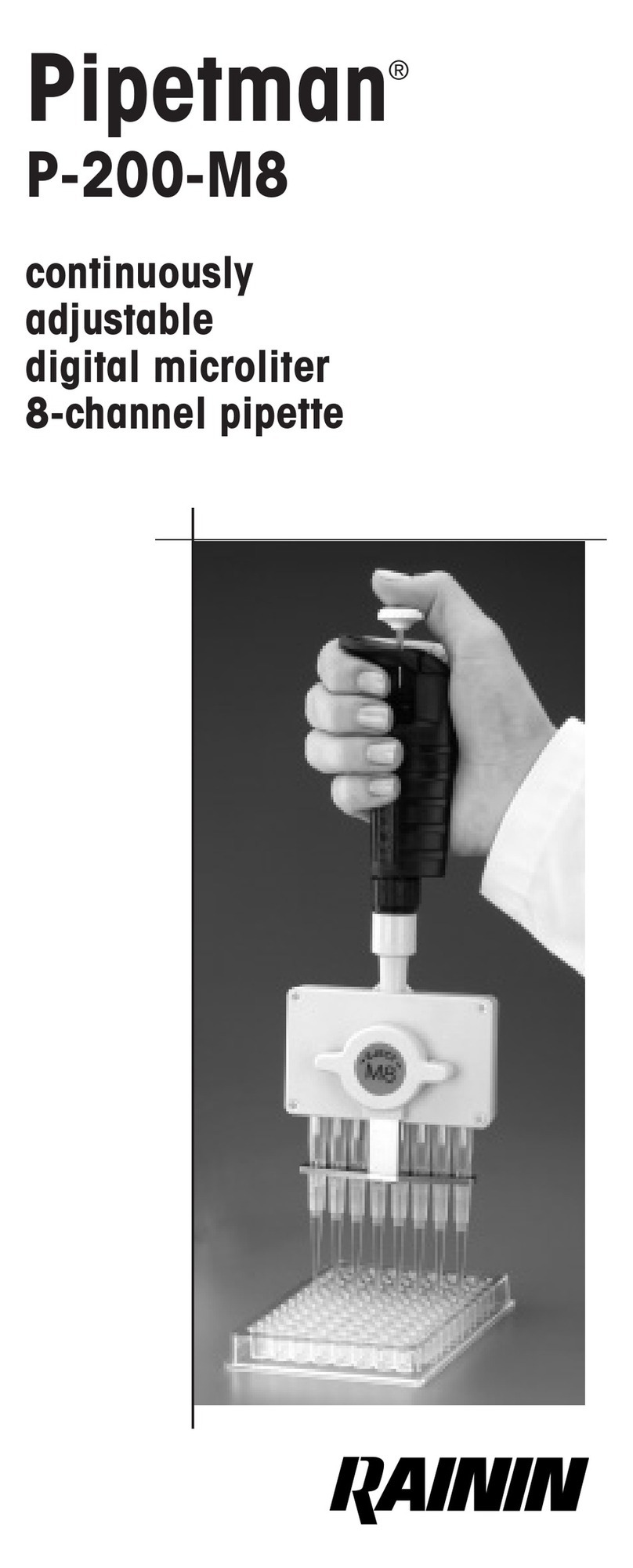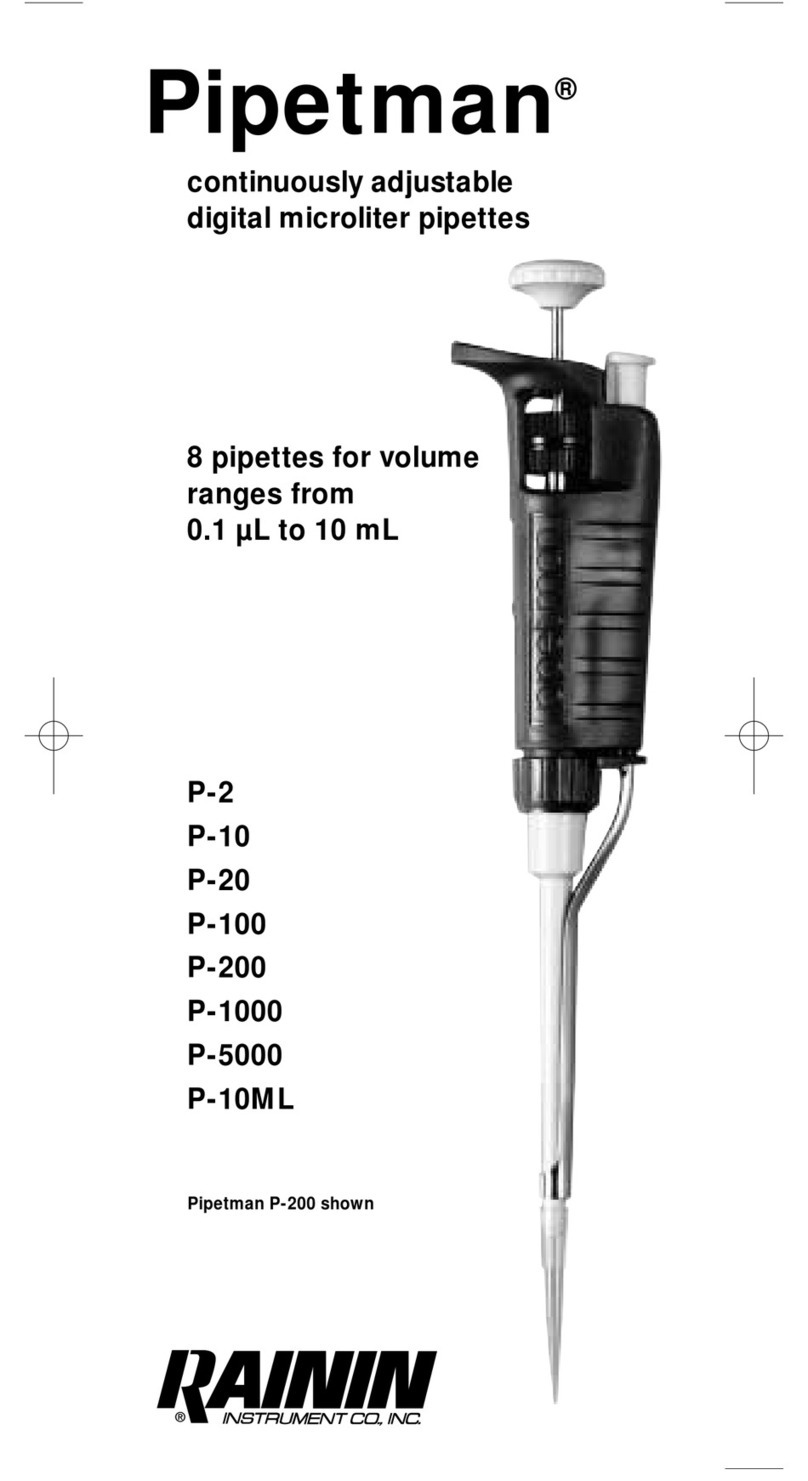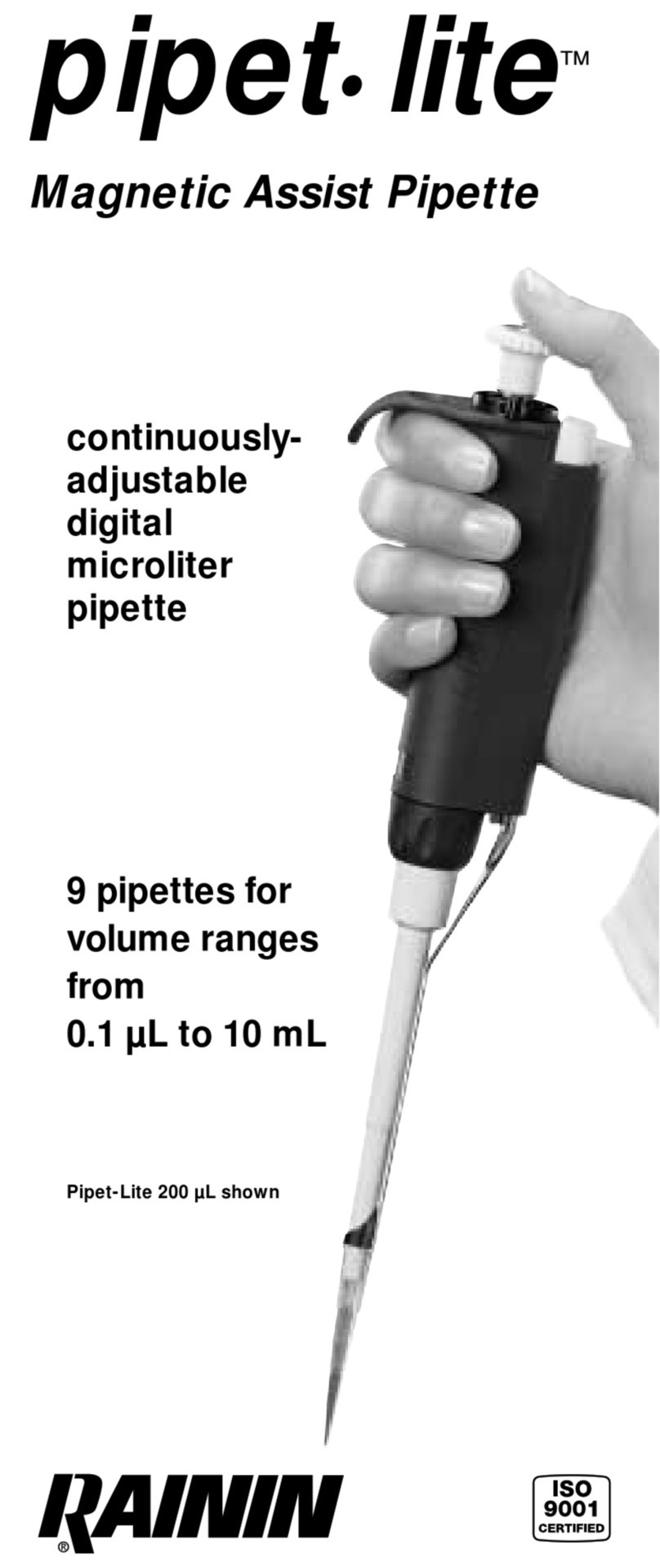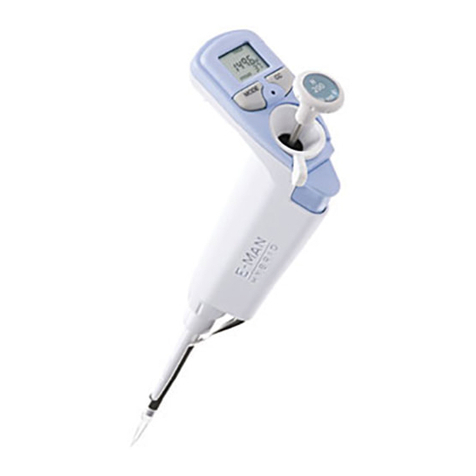Contents
Description........................................................................1
Autoclaving ......................................................................2
Operating Ranges ..............................................................2
Switching On ....................................................................2
Volume indicator - LCD window ..........................................2
Setting the Volume ............................................................3
Tip Selection......................................................................4
Pipetting ..........................................................................4
Tip Immersion Depth ..........................................................5
Pipetting Guidelines & Precautions ......................................6
Reverse Mode Pipetting ......................................................6
Pipetting Liquids of Varying Density......................................7
Temperature Considerations ................................................7
Acids and Corrosives..........................................................7
Personalizing your Pipette ..................................................8
Name Tag Label ................................................................8
TIp-Ejector Extension ..........................................................9
Troubleshooting ..............................................................10
Error Messages................................................................11
Maintenance ..................................................................11
Cleaning and Decontamination..........................................16
Leak Test ........................................................................18
Recalibration ..................................................................18
Service, Calibration and Repair..........................................20
GLP Features ..................................................................20
Specifications ..................................................................21
Replacement Parts ..........................................................22
Pipetman Ultra Features
Parallax-free electronic display for easy volume setting
Flashing indicators if volume set is out of range
Ergonomic design, maximum comfort for left or right-handed use
Light, balanced, low ejection force
Simple to maintain and calibrate
GLP cycle counters
Parts Check List
The following items should be included.
Pipetman Ultra User's Guide
Calibration Tool Tube of lubricant (except U-2 & U-10)
Name-tags (5 different colors)
Certificate of conformity (including bar-code sticker).
If any item is missing, call 800-543-4030
Technical Assistance: 800-543-4030
Call this toll free number for technical consultation and product
information for Pipetman, RAININ pipettes, and disposable tips.
Pipetman and Microman are trademarks of Gilson Inc. U.S. and national patents pending.
Rainin is the U.S. distributor of Pipetman products.
Copyright 2003, Rainin Instrument, LLC.
Prices and specifications are subject to change without notice.






